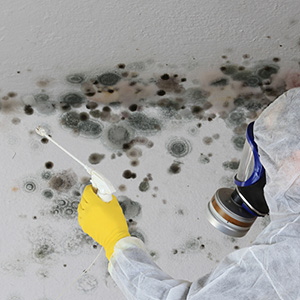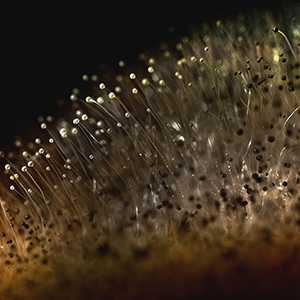- >
Managing Mold in your HVAC Unit
- By: Cheli Scott
- Date: Nov 09 2022
Similar Articles
What you Need to Know About Ductless Air Conditioning
Many consumers are unfamiliar with ductless air conditioning systems. We've assembled some info to help you learn!
How to Choose a Replacement Thermostat
The part of your HVAC system you interact with the most is your thermostat so let us help you choose the right one for your home!
How to Air Balance your Home
If you are concerned about your current system's performance, it may be time to consider investigating how to air balance your home.
Managing mold in your HVAC unit
If you start smelling a strange, musty smell in your home you may find you have mold in in your HVAC unit. Mold growth is a common problem for homeowners, especially in humid regions of the country like Florida. A 2004 study showed that 20% of buildings in the US, Canada, and Europe had signs of dampness. You HVAC system can spread mold spores throughout your home, causing a mold problem in other areas and making you sick.
Mold will grow where there is moisture, this can include ductwork, insulation, drywall, and carpet, among other places.
Mold can enter your home and HVAC system a myriad of ways. You can carry it in on your clothes, it can be pulled in with your air conditioner, or simply float in through an open doorway. It is impossible to avoid mold completely, but when mold growth becomes a problem it can be expensive to fix.
One place mold can become a problem is in an old or poorly functioning HVAC system. Leaks in ductwork, pipes, or old filters can create places for mold to build up. It is best to perform periodic maintenance on your HVAC system to prevent mold growth ahead of time.
The most usual way mold growth is detected is through smell. If your air conditioner starts putting off an odor, it is likely there is mold buildup.
You may also find upon inspection that there is visible mold. It will appear as either black, white, orange, green, or brown stains. It may also appear furry or speckled.
Different colored molds may seem confusing at first, but they are all harmful and should be taken seriously. The CDC recommends that no matter the color of mold growth in your home, you should remove it.
How do mold spores effect health?
Mold growth can have serious effects on your health. If you are experiencing a persistent cough or allergy flare ups, this could be caused by mold. Exposure to certain molds can cause eye and skin irritation.
The CDC says that exposure to mold is linked to upper respiratory issues including wheezing, labored breathing, and coughing. It can exacerbate pre-existing conditions like asthma and has even been linked to the development of asthma in children.
There is often talk of “black mold” being worse for you than other kinds of mold spores. That is not necessarily true. All colors of mold are dangerous and can cause numerous health issues.
Common ways mold enters your HVAC system
According to the World Health Organization, mold can begin to build up in your home in a number of scenarios related to your HVAC system.
One simple way is poor ventilation. If indoor humidity levels are high do to blocked ducts or poorly functioning ventilation fans, you can develop mold in both your ductwork and even in the paint on your walls. Situations like this often occur in bathrooms and kitchens, but it can also occur in areas where a lot of moisture is likely to develop. For example, above a fish tank or near a dishwasher, where there may not be additional ventilation ducts.
A very common problem that leads to mold is an overflowing drain pan or leak from a condensate drain line. This can be caused by insufficiencies in your HVAC system and can be prevented by proper maintenance.
High humidity in your home caused by a malfunctioning HVAC system is also an easy way to develop mold problems in your home. Punctures and leaks in your ductwork can give liquid places to collect encouraging mold to grow.
Failure to change filters is another common way homeowner’s develop mold in their ac system. Air filters must be changed regularly, especially if you inspect them and begin to see black spots or greenish stains developing on the surface.
Ways to prevent mold growth
If mold is everywhere, how can a you avoid it? There are a number of things you can do to prevent mold growing in your home. The old adage is true, especially in this instance, “an ounce of prevention is worth a pound of cure.” The process to remove mold from your home can be costly if it gets out of control.
Regular maintenance
The first step should always be regular maintenance. Change your air filters regularly to prevent mold growing in them. Likewise, be sure to clean your condensate drip pan to make sure it doesn’t overflow.
Insulate air ducts
Insulating air ducts is another way to stop mold growth. Condensation has a tendency to develop on uninsulated ducts and can build up, creating a moist area for mold to grow. If you find leaks in your air ducts, be sure to fix them immediately.
Lower the humidity
Keep your indoor humidity as low as you can to prevent mold from growing, ideally between 30 and 50%. If you see moisture collecting on windows, your indoor humidity needs to be lowered.
Removing mold from your air conditioner
If you find mold in your ac unit it is possible to do some of the clean up on your own. The Environmental Protection Agency recommends you should only clean mold yourself if the area is less than ten square feet.
Wear the correct gear
It is important to wear proper safety gear when cleaning mold. In order to prevent inhaling mold spores, wear an N-95 dust mask. Wear gloves and goggles to avoid getting mold on your hands or in your eyes.
Cleaning mold buildup
You can scrub mold off of hard surfaces and HVAC component with a brush or sponge with commercially available detergent, but soft, porous surfaces must be thrown away. You can also use a household bleach solution if you don’t have detergent available. Consult your air conditioners owner’s manual for directions on how to disassemble your unit. Never paint or caulk over mold.
When to call a professional
If the area you need to clean is larger than ten square feet, has heavy mold growth, or the mold damage is caused by sewage, it is a good idea to call a professional for clean up. You may also want to enlist a professional if you are sensitive or have allergic reactions to mold spores.
Managing mold in your HVAC systems
Don’t let mold in your HVAC system overwhelm you. While it is a big, ugly problem, there are things you can do now to prevent the worst from ever happening. With proper maintenance you can avoid the excess moisture that leads to moldy areas.
If you find you need assistance preventing mold, you can always consult an HVAC technician for a consultation, like the ones at bhild.com. Call us today, or fill out our form here for a free estimate on HVAC services!












